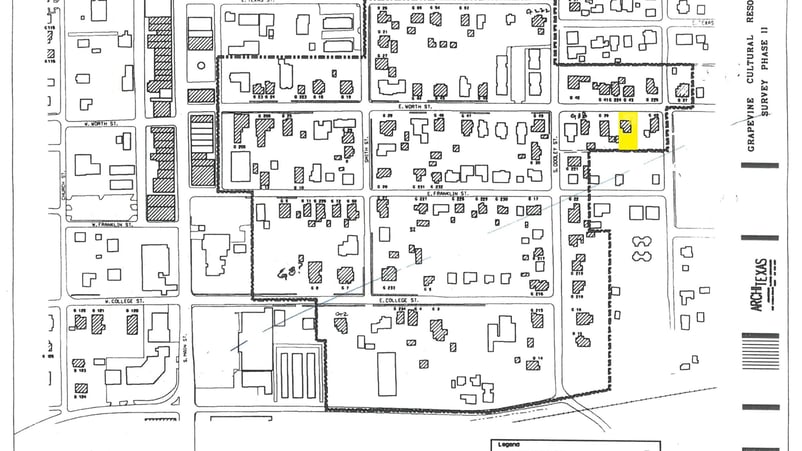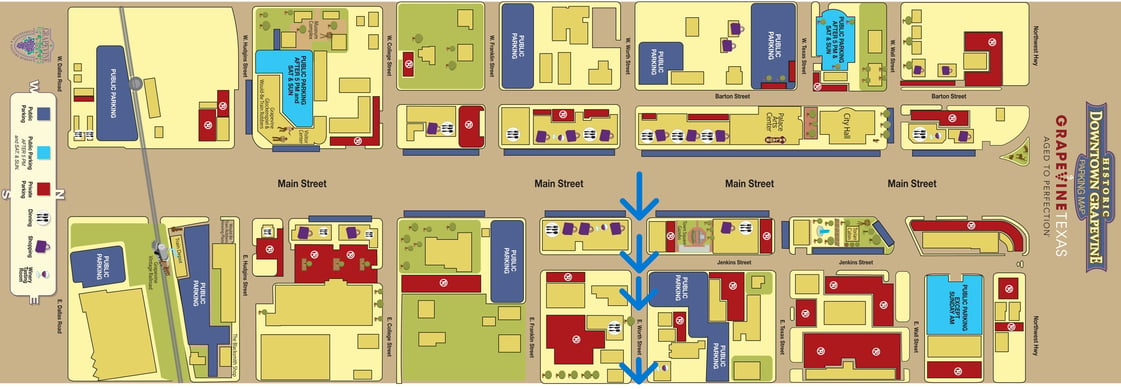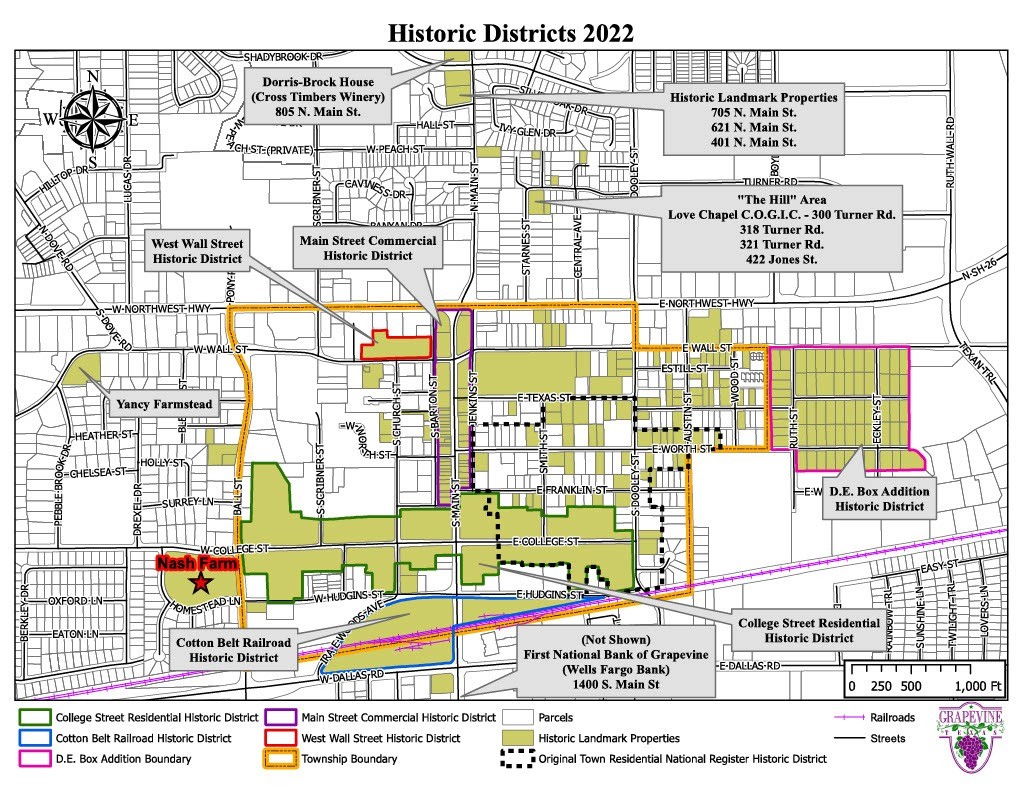A 170 Year History of East Worth Street
Grapevine, Texas, was officially established in 1844, one year before Texas became a state. It was named after the nearby Grape Vine Prairie and the wild mustang grapes that grew in the area. The settlement developed after General Sam Houston and Republic of Texas Commissioners signed a treaty with Native American tribes at Bird's Fort, opening the region for pioneers. Grapevine is now one of the oldest continuously inhabited settlements in North Texas. East Worth Street in Grapevine, Texas, holds historical significance as one of the 16 original streets in the Grape Vine Township in 1854. Downtown Grapevine, Texas, has its roots in the mid-19th century. The downtown area developed over time, especially with the arrival of the railroad in the late 19th century, which spurred economic growth. Today, Historic Downtown Grapevine preserves many of its original buildings and serves as a cultural and commercial hub. In the early 20th century, the street underwent significant improvements. Notably, in January 1909, a group of fifteen prisoners worked on graveling East Worth Street, enhancing its infrastructure. Their efforts focused on the section from Main Street to the Public School building, which is now the location of Grapevine Faith Christian School. 520 East Worth is within the College Heights Historic District.


The College Heights Historic District in Grapevine, Texas, is a residential area recognized for its historical significance. It is also known as the Original Town Residential Historic District and was officially listed on the National Register of Historic Places on July 10, 1998. The district is roughly bounded by Texas, Austin, Hudgins, and Jenkins Streets. It encompasses a collection of late 19th and early 20th-century houses, reflecting the architectural styles and community development of that era. In 1991, the City of Grapevine adopted a Historic Preservation Ordinance to protect its unique architectural heritage. This ordinance led to the creation of the Historic Preservation Commission and established a process for designating historic districts and landmarks within the city. The College Heights Historic District stands as a testament to Grapevine's commitment to preserving its rich history and architectural character.
College Heights Historic District (520 East Worth in yellow)
In November, 1951, Cleo Tillery purchased the house at 520 East Worth from Paul Barnes. Cleo Tillery was born on November 14, 1912, in Grapevine, Texas, to Tim Tillery and Cora Renfrow. He married Hazel Reynolds on October 18, 1936, in Grapevine. The couple had several children, including Janice Tillery, born on June 17, 1940. Cleo Tillery passed away on January 4, 2003, in Grapevine at the age of 90. Janice Tillery Daniel inherited the property upon her father's death and owned the property until her death on January 18, 2022. Ownership passed to Ms. Daniel's two son's, Troy and Wayne who have owned the property since. The property has been owned by the Tillery/Daniel family for 74 years.
Map of Downtown Grapevine (Dallas Road to Northwest Highway)
(East Worth shown with arrows)


A Short History of Grapevine
Grapevine, Texas, is one of the oldest settlements in North Texas, rich in history and deeply tied to the development of the Dallas-Fort Worth area. Here’s an overview of its history:
Early History & Settlement
The area that is now Grapevine was originally inhabited by Native American tribes, primarily the Caddo and later the Comanche. In 1843, General Sam Houston and representatives of the Republic of Texas signed a peace treaty with ten Native American nations at what is now known as Grapevine Springs. This treaty opened the area for settlement by Anglo-Americans.
19th Century Growth
Settlers began arriving in the mid-19th century, drawn by the fertile land and abundant water sources. The town was named after the wild mustang grapes that grew in the region, and the surrounding area became known as Grapevine Prairie. Agriculture, especially cotton farming, was a significant part of the early economy.
By 1854, the first permanent settlement was established, and in 1866, the town formally became Grapevine. The arrival of the Cotton Belt Railroad in the 1880s further boosted the local economy, facilitating trade and transportation.
20th Century Development
In the early 1900s, Grapevine remained a small but thriving farming town. However, the construction of Grapevine Lake by the U.S. Army Corps of Engineers in the 1940s and 1950s was a turning point, providing flood control and a water source for the growing Dallas-Fort Worth region. The lake also became a recreational hub, attracting visitors.
During the mid-to-late 20th century, Grapevine began shifting from an agricultural community to a tourism and business hub, thanks to its proximity to Dallas/Fort Worth International Airport (DFW), which opened in 1974.
Modern Grapevine
Today, Grapevine is a thriving city known for its historic downtown district, wineries, and family-friendly attractions. The Grapevine Vintage Railroad preserves the city’s railway history, while Main Street is home to restored 19th- and early 20th-century buildings, boutique shops, and restaurants. The city is also famous for its GrapeFest, the largest wine festival in the Southwest.
Grapevine has successfully balanced historic preservation with modern development, making it a major destination for visitors and a sought-after place to live.


